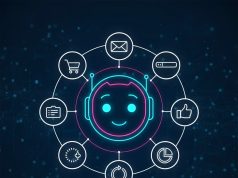In today’s competing digital marketplace, e-commerce companies want innovative ways to improve the customer experience by optimizing constant operational operations. The most transformation technologies that are revolutionized in the online store are chatbots on e -commerce. These AI-operated virtual assistants have evolved from simple questions-response devices to sophisticated systems that can dramatically affect business results. According to Junipar Research, chatbots will help save more than $ 8 billion annually by 2025, with e-commerce one of the most important recipients.
At BotMarketo, we’ve observed firsthand how properly implemented chatbots can serve as the cornerstone of modern e-commerce strategy. This comprehensive guide explores the fundamental functions that make e-commerce chatbots indispensable for online retailers seeking competitive advantage in today’s digital-first economy.
How E-commerce Chatbots Transform Online Shopping Experiences
Before diving into specific functions, it’s important to understand the broader context of how chatbots are reshaping e-commerce. Unlike traditional website navigation, chatbots provide conversational interfaces that mirror human interactions, creating personalized shopping journeys that adapt to individual customer needs.
According to a recent Accenture study, businesses implementing conversational AI solutions like chatbots see an average 25% increase in conversion rates and a 30% reduction in customer service costs. This dual benefit of revenue growth and cost reduction explains why 70% of e-commerce businesses either have implemented or plan to implement chatbot technology by the end of 2025.
1. Personalized Product Recommendations
One of the most valuable functions of e-commerce chatbots is their ability to deliver highly relevant product recommendations based on customer interactions and data.
How Recommendation Engines Work
Modern e-commerce chatbots utilize sophisticated algorithms that analyze:
- Past purchase history
- Browsing behavior
- Stated preferences
- Similar customer profiles
- Current conversation context
By processing these multiple data points, chatbots can suggest products with remarkable accuracy, often anticipating customer needs before they’re explicitly expressed.
For example, if a customer asks about running shoes, an advanced chatbot doesn’t simply display all available running shoes. Instead, it might ask about running frequency, terrain preference, pronation issues, and previous shoe satisfaction to recommend precisely the right products.
This level of personalization creates a 79% higher likelihood of conversion compared to generic product displays, according to Epsilon research.
2. Seamless Order Processing and Tracking
Efficient order management represents another critical function of e-commerce chatbots. Today’s consumers expect immediate access to order information without navigating complex website menus or waiting for customer service representatives.
Order Placement Capabilities
Advanced chatbots can:
- Guide customers through the entire purchasing process
- Accept payment information securely
- Apply relevant discounts automatically
- Upsell complementary products intelligently
- Confirm order details conversationally
Order Tracking Features
Post-purchase, chatbots provide continuous value by offering:
- Real-time shipping updates
- Delivery time estimates
- Proactive delay notifications
- Return/exchange processing
- Reordering options for repeat purchases
This seamless order management creates a frictionless experience that encourages repeat business while reducing support ticket volume by up to 40%, according to industry metrics.
3. Intelligent Customer Support Automation
Perhaps the most immediately recognizable function of e-commerce chatbots is customer support automation. This function alone delivers substantial ROI by addressing customer inquiries instantly at scale.
First-Line Support Capabilities
E-commerce chatbots excel at handling:
- Product information requests
- Pricing inquiries
- Availability checking
- Store policy questions
- Basic troubleshooting
For straightforward questions, well-designed chatbots achieve resolution rates exceeding 70%, freeing human agents to focus on more complex customer needs.
Human Handoff Intelligence
Equally important is the chatbot’s ability to recognize when human intervention is required. Sophisticated systems can:
- Detect customer frustration through sentiment analysis
- Identify complex issues beyond AI capabilities
- Transfer relevant conversation history to human agents
- Route inquiries to specialized departments
- Maintain continuity when transitioning between support channels
This intelligent triage system ensures customers receive appropriate assistance while maximizing operational efficiency.
4. Cart Abandonment Recovery
Shopping cart abandonment remains one of e-commerce’s most persistent challenges, with average abandonment rates hovering around 70%. Chatbots offer powerful solutions for recapturing these potentially lost sales.
Abandonment Intervention Strategies
Effective e-commerce chatbots can:
- Detect abandonment patterns in real-time
- Initiate timely recovery conversations
- Identify and address specific obstacles to purchase
- Offer targeted incentives when appropriate
- Simplify checkout processes through conversational interfaces
Research from Baymard Institute indicates that addressing specific abandonment reasons through timely intervention can recover between 10-30% of otherwise lost revenue, making this chatbot function particularly valuable.
5. Data Collection and Consumer Insights
While less visible to customers, the data collection capabilities of e-commerce chatbots provide invaluable business intelligence that drives strategic decision-making.
Voice of Customer Capture
Through natural conversations, chatbots continuously gather:
- Product feature preferences
- Common pain points
- Competitor comparisons
- Price sensitivity indicators
- Emerging market trends
Unlike traditional surveys with limited response rates, chatbot interactions generate continuous feedback streams that reflect authentic customer sentiment.
Analytics and Reporting
Advanced e-commerce chatbot platforms transform raw conversational data into actionable business intelligence through:
- Sentiment analysis dashboards
- Demand forecasting models
- Competitive intelligence reports
- Product development insights
- Marketing effectiveness metrics
This data-driven approach enables agile business responses to changing market conditions and evolving customer preferences.
6. Omnichannel Engagement
Modern consumers expect seamless experiences across multiple touchpoints. E-commerce chatbots excel at maintaining conversation continuity across channels.
Cross-Platform Capabilities
Sophisticated chatbots maintain consistent experiences across:
- Website chat interfaces
- Mobile applications
- Social media platforms
- Messaging applications (WhatsApp, Facebook Messenger)
- Voice assistants
This omnichannel presence ensures customers can engage on their preferred platforms without losing context or repeating information.
Consistent Brand Voice
Equally important is the chatbot’s ability to maintain brand personality across all channels while adapting to channel-specific constraints and opportunities. This consistent brand experience strengthens consumer relationships regardless of how customers choose to engage.
7. Proactive Customer Engagement
Rather than waiting for customer initiation, advanced e-commerce chatbots can strategically initiate conversations to enhance shopping experiences and drive conversions.
Contextual Intervention Points
Effective chatbots identify optimal moments for engagement based on:
- Time spent on specific product pages
- Repeat visits to particular items
- Hesitation patterns during checkout
- Seasonal shopping opportunities
- Inventory changes affecting watched items
By initiating conversations at these critical moments, chatbots can address unspoken questions and remove purchase barriers before they lead to abandonment.
8. Language Processing and Multilingual Support
For global e-commerce operations, linguistic capabilities represent a crucial chatbot function that expands market reach and enhances accessibility.
Natural Language Understanding
Advanced chatbots utilize sophisticated NLP (Natural Language Processing) to:
- Interpret language variations and colloquialisms
- Understand intent despite grammatical errors
- Process complex queries with multiple components
- Maintain conversation context over extended interactions
- Learn from previous conversations to improve accuracy
Multilingual Capabilities
Leading e-commerce chatbots support multiple languages, allowing businesses to:
- Serve diverse markets without multiplying support teams
- Provide consistent experiences regardless of language
- Scale internationally without proportional support costs
- Detect and adapt to regional language variations
- Switch languages seamlessly within conversations
These linguistic capabilities create inclusive shopping experiences while significantly expanding potential market reach.
9. Loyalty Program Management
Customer retention drives e-commerce profitability, with existing customers typically spending 67% more than new customers. Chatbots play a vital role in loyalty program management.
Loyalty Functions
Effective e-commerce chatbots can:
- Provide real-time points balance information
- Explain reward redemption options
- Notify customers about expiring benefits
- Suggest personalized ways to maximize rewards
- Streamline redemption processes
By making loyalty program participation effortless and rewarding, chatbots help maintain the customer relationships that drive long-term business value.
10. Continuous Improvement Through Machine Learning
Perhaps the most powerful function of advanced e-commerce chatbots is their ability to improve through machine learning, delivering increasingly valuable experiences over time.
Self-Optimization Capabilities
Well-designed systems continuously enhance performance by:
- Identifying and addressing common failure points
- Recognizing emerging customer questions
- Refining recommendation accuracy
- Optimizing conversation flows based on success metrics
- Adapting to seasonal and trend-driven changes
This self-improvement capability ensures the chatbot’s value increases rather than diminishes over time, providing sustainable competitive advantage.
Implementing E-commerce Chatbots: Strategic Considerations
While understanding core functions is essential, successful implementation requires strategic planning. When evaluating chatbot solutions for your e-commerce business, consider these critical factors:
Integration Requirements
Effective chatbots must seamlessly connect with:
- Inventory management systems
- CRM platforms
- Payment processors
- Analytics tools
- Marketing automation systems
Without proper integration, chatbots cannot deliver on their core functions, regardless of algorithmic sophistication.
Performance Metrics
Establish clear success metrics, including:
- Conversion rate impact
- Customer satisfaction scores
- Resolution rates
- Average order value influence
- Support cost reduction
These quantifiable measures ensure your chatbot investment delivers meaningful business outcomes rather than merely technological novelty.
Conclusion: The Future of E-commerce Chatbots
As we have discovered, today’s chatbots on e-commerce do many important tasks that together change online shopping experiences. Furthermore, emerging technologies such as advanced computer vision, emotional recognition and intensive integration with improved reality even more engrossing and effective chatbot skills.
Getting competitive advantages for e-commerce companies, the implementation of Chatbot technology is no longer optional-it is mandatory. The question is not to distribute chatbots but how to implicate
e
To learn more about implementing state-of-the-art chatbot solutions for your e-commerce business, visit BotMarketo for expert guidance and customized implementation strategies that align with your unique business requirements.
By embracing the core functions outlined in this guide and partnering with experienced implementation experts, your e-commerce business can harness the full potential of chatbot technology to drive sales, enhance customer experiences, and build sustainable competitive advantage in today’s dynamic digital marketplace.









